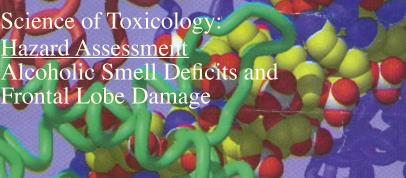 |
||

Risk Assessment is another type of causation: predicting whether an exposure, usually in a population rather than a single individual, will increase the risk of developing some adverse health effect, without necessarily determining whether such health effect actually occurs. Risk means that all such exposed individuals are more likely to develop an adverse effect, but it does not mean that any particular individual will or even that the majority of individuals will. Smoking, for example, increases risk of lung cancer from approximately one in 100 to 1 in 10--a signficiant increase. Nevertheless, ninety percent of smokers do not develop lung cancer, even though they are all at increased risk. Risk Assessment is used by regulatory agencies, such as the EPA, to determine how much of a chemical can be released into the environment without causing an unacceptable increase in risk of an adverse effect. 'Unacceptable' is more of a policty decision than a scientific one.
Specific causation analysis can be divided into the following three components:
(1) Hazard Assessment
(2) Exposure Assessment
(3) Health Assessment
(1) Hazard Assessment: what harm can the chemical cause, based on intrinsic toxicity and circumstnaces of exposure, form of chemical (gas, liquid, solid) and susceptibility of individual.
(2) Exposure Assessment how much of the chemical is in a media (air, water, food, soil) available to be taken into the body? Is this a one-time or multiple exposure? Does it occur over a short period of time (acute) or over many months or years (chronic)? How does the length of exposure affect the toxicity of the chemical? How much of the chemical gets absorbed into the body (dose), and where in the body does it end up (distribution and target organ/tissue)?
(3) Health Assessment: what type of health effect develops (or gets exacerbated), and does this occur immediately or after a delay (lag time)? Is this a new effect in the individual or is there a history of this type of problem, made worse by the chemical exposure? Is the individual in a high risk group (in utero, infant, elderly, reduced immune function)? Are there other (alternative) known causes for this problem and were these causes present ?
A controlled study in alcoholic patients showed that smell deficits, common in alchoholics, was associated with abnormality in executive functioning--indicative of frontal lobe damage--but not with abnormality in memory loss--indicative of medial temporal lobe function. That is, among those alcoholics with significant smell deficits, compared to those without such deficits, there were abnormalities indicative of damage in the frontal but not medial lobes. Olfactory function was determined by the standard Sniffing Sticks Test battery. This included identification of smells, discrimination between smells and threshold for smell detection. Executive function was tested with the Wisconsin Card Sorting Test and memory was tested by the German version of the California Verbal Learning Test. Although compared to controls alcoholics are deficient in both executive function and memory, this study showed that among alcoholics, those with signficantly worsened olfactory functioning, significant differences were seen also in executive functioning but not memory. This suggests that damage in the frontal lobe region due to alcohol may play a major role in olfactory malfunction in alcoholics rather than damage in the medial lobe.
These findings are also contrasted with those in schizophrenia, in which smell deficits are associated with damage to both the frontal and temporal lobes.

